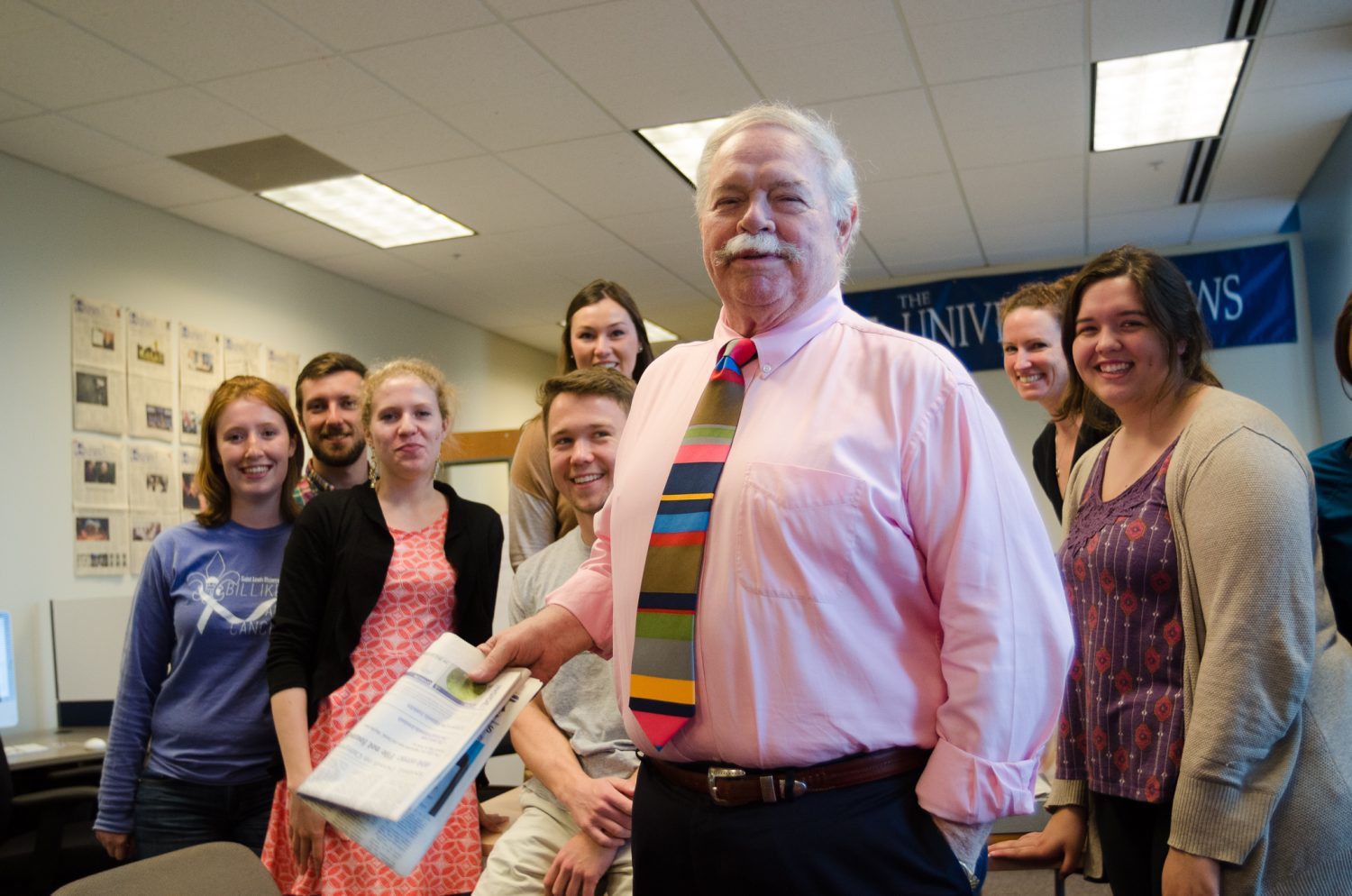A few blocks north of campus, in a neighborhood where small shops with iron-clad bars cover the windows and broken sidewalks line the street, a large, white, brick building rests on a bright green lawn, tucked away from the street corner. In the not-so-far-off distance are the familiar sights of the Continental Building, Coronado and Lindell Towers. This cold, unfriendly looking building is where about 80 young people live, although if you ask any of the building’s inhabitants, they are unlikely to call it home. To them, it’s hell.
The people who live in the building are not there by choice. The state of Missouri has ordered each resident to live in the Juvenile Detention Center, located just blocks from Saint Louis University’s campus, either while waiting for a court date or as a sentence.
I volunteer there with two other girls from SLU. Once a week, we teach a singing group for the female residents, but often, we talk as much as we sing. We talk about everything, from where we buy jeans to going to college, to the girls’ lives outside of detention. State laws prohibit us from asking a girl why she is in detention. The residents are only allowed to talk about their cases to specific people, and, according to facility rules, if a resident begins to talk to us about their case, we are supposed to say something to the effect of: “I’m glad that you want to talk about this, but I may not be the best person for you to talk to this about. Maybe you should talk to (insert appropriate person) instead.”
Throughout my two years of volunteering there, it has been relatively easy to follow this simple rule. Often, the girls don’t really want to talk about their cases, or they simply don’t care who knows why they are in detention.
But sometimes it’s not so easy. And occasionally, the rule book needs to be thrown out the window.
About a week ago, when the girls walked into the room where we sing, one girl in particular stood out. I remembered her from volunteering last year when she was in detention several times. It is not uncommon to see kids come back to detention; in fact, the recidivism rate is astoundingly high, around 85 percent.
Something about the look on her face just wasn’t right. We picked up on it right away and began our session by talking to the girls. The girls asked if the weather was nice. The kids aren’t allowed to go outside, because there is a problem with the place where the wall meets the building. Some kids a few years back discovered that they could climb onto the roof and escape by climbing up the wall, so until the center has enough money from the state to fix the wall, the kids cannot go outside at all. Nobody’s holding their breath for that money to come in.
We told the girls it was a searing 90 degrees outside. They said that they would love to go outside–in fact, there is a lot they would love to do. They’d love to see their families more than once a week. They’d love to be able to talk to their parents for more than just a few minutes on Sunday. But they can’t, by force of statute. As I looked at the girls, I noticed that one had tears welling in her eyes. She had been quiet until this point, and she tentatively asked a question that silenced our chatter.
“How do y’all feel coming in here and seeing people locked up?” she asked.
That opened the floodgates.
We ended up talking for most of our time with the girls, but one girl couldn’t stop crying. Eventually, her horrifying story unraveled: running for months from authorities, fear that the state would take her baby, a mother in jail, and finally, turning herself in when the police stumbled across her.
She went with the police officers and left her daughter behind in the hands of the state. That night, she still didn’t know what would happen to her child. She’s 14.
She has been in and out of detention for the last two years. It all started when she was 12 and pled guilty to a crime without knowing what a guilty plea meant for her. Now, she says that she wants to change so she can be a better mother, so her daughter won’t grow up in foster care.
I spent the rest of the night thinking about her, but more questions filled my head than answers about what I was feeling. Why was she convicted when she didn’t understand what a guilty plea meant? Why hadn’t she been told what the state was doing with her baby?
Soon, I was reeling about the entire juvenile justice system. The majority of kids in detention live below the poverty line. Many have been raised on welfare and food stamps, and many have never lived in dual-parent households, or even stable single-parent families. Some grew up in crack houses, others on the street–with or without parents. The sad reality is that some kids are, in a way, glad to be in detention–they know they will have three meals, a roof over their head, clothes and a warm bed.
The restricted visiting hours are ridiculous. I understand their necessity, but when a parent is struggling to keep a job, are they really going to be able to take off a few times a week during the day to go see their kid? Probably not. Maybe that’s part of the reason why fewer than 25 percent of the kids there get regular visits and phone calls.
Is it right to keep these kids locked indoors? No! These kids only feel the cold glow of fluorescent lights, and the eerie chill of darkness in their rooms.
People say that they want these kids to change, to turn their lives around, yet the state doesn’t do much to rehabilitate them. These aren’t hardened criminals, incapable of changing–they are kids. They need people who genuinely care about them and love them.
I think people sometimes forget that these kids aren’t just statistics or faceless names of children who have fallen victim to troubled lives.
These kids are filled with an amazing spirit. The kinship they develop is astounding, and their bond with each other is unbreakable.
Some days, I leave the detention center feeling like my time with them isn’t enough. I want to let these kids know that people do care and that the entire world isn’t as bad as the world they’ve grown up in.
Sharon Turlek is a junior studying political science.





